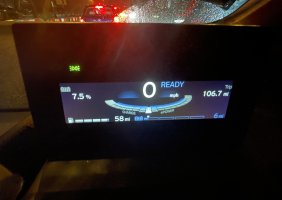https://12ft.io/ is your friend....
Interesting article to ensure we ignore current ways of reducing our output and keep buying oil ....
Every few years a disruptive technology comes out of left field and entirely changes the future of the global energy system, smashing into our consciousness like a thunderclap.
It happened with shale fracking around 2009-2011, confounding OPEC, Russia, and an opinion establishment still hooked on the great red herring of peak oil.
America went from an alarming energy deficit to become the top exporter of oil and gas within a decade. The dollar came roaring back. So did American power.
Today’s exuberant rush for “white” hydrogen has the same feel.
We are suddenly waking up to the very real possibility that
vast reserves of natural hydrogen lie under our feet and can plausibly be extracted at costs that blow away the competition, ultimately undercutting methane on pure price.
Scientists have long argued that pockets of exploitable geological hydrogen are more abundant than hitherto supposed.
The perpetual burning gas at Chimaera in Turkey – believed to be the source of the Olympic flame – has a hydrogen content reaching 11.3pc. There is another such marvel at Los Fuegos Eternos in the Philippines.
It has been known since 2012 that hydrogen beneath the village of Bourakébougou in Mali has 98pc purity. The site was discovered in the 1980s when it blew up in the face of a local man smoking a cigarette while drilling for water.
Professor Alain Prinzhofer from the Institute of Physics in Paris found that the gas flow remained constant over time – the pressure even rose – confirming a hypothesis that hydrogen can keep renewing itself by a chemical reaction underground.
What is new is that the world now needs that hydrogen and is acting on the insights.
The US Geological Survey concluded in April that there is probably enough accessible hydrogen in the earth’s subsurface to meet total global demand for “hundreds of years”.
The US Energy Department is drawing up plans to help kick start the industry, deeming the potential “astronomical”.
Viacheslav Zgonnik, a Ukrainian geologist, thinks white geologic hydrogen could be so cheap and abundant that it conquers the energy market.
“We think that we can reach $1 a kilo in the long-run and provide baseload power 24/7. It can be compressed for storage in steel tanks. It is not that expensive,” he said.
If so, that raises awkward questions about the eye-watering subsidies going into green variants (from electrolysis) and blue variants (natural gas with carbon capture).
Green hydrogen costs $3 to $4 today. It will become cheaper with scale, but getting much below $2 will be hard: you currently lose 70pc of the original energy in the making, and it requires a massive electrolyser industry that does not yet exist.
Are the EU,
the UK, Japan, and others, barking up the wrong tree with their hydrogen strategies?
And is the vogue for drilling bans in Europe an ecological own-goal? Hydrogen wells use much the same drill kit as the oil and gas industry, with some need for modification since hydrogen degrades metal piping, and the tiny molecule leaks easily.
“We can get to scale faster than with green hydrogen and without using up the land surface that you need for renewables.
“It makes much more sense to leverage up the potential of natural hydrogen. But if you look at the grants, they are all going to green hydrogen projects. That needs correcting rapidly,” he said.
Today’s wildcat drilling for hydrogen is very like the early days of fracking in Texas and Pennsylvania.
In May, Française De l’Énergie and researchers from GeoRessources made Europe’s biggest discovery to date, finding 15pc hydrogen content at a depth of 1,100 metres.
Europe's biggest natural hydrogen discovery was made in the Lorraine Mining Basin in France
It is not contaminated by corrosive gases and can be separated easily. The next step is to drill to 3,000 metres, where the purity is expected to reach 90pc.
Hydrogen is produced in vast quantities from a constant chemical process in the earth’s crust and mantle, but is also made in pockets where water reacts with iron-rich minerals.
It works its way upward, mostly eaten by bacteria along the way, or turning into long chain hydrocarbons when it bumps into fossil deposits. Scientists had assumed that little survived the journey. Geologists are now proving that they were wrong.
Gold Hydrogen has hit accumulations with 80pc content at 500 metres in the Yorke Peninsula of South Australia, the frontrunner of the global hydrogen rush.
Australia has already created the world’s most advanced regulatory and permitting structure. Natural Hydrogen Energy, co-founded by Dr Zgonnik, is drilling in Nebraska. China has begun exploration in Inner Mongolia.
“We never found much hydrogen before because we weren’t looking for it,” said Professor Jon Gluyas, a world expert on natural hydrogen at Durham University. Mass spectrometers and sensors were not set to detect it in normal drilling.
“It’s a colourless, odourless gas, so it is not easy to spot. You are not going to find it with oil because the hydrogen bubbling up from below reacts with it,” he said.
The one place where they did try to detect hydrogen was the old Soviet Union because of a (false) hypothesis that it was a geological marker for oil and gas deposits.
They discovered it in rich volumes across much of the country. That is the likely template for the rest of the world.
The big oil and gas drillers are watching from the sidelines, just as they did at the start of fracking. “Investors want to see the first demonstration that you can drill for hydrogen on purpose rather than finding it by accident,” said Dr Zgonnik.
The critical breakthrough will probably happen somewhere within a year or two.
South Australia has emerged as the frontrunner in the global hydrogen race
Whether it then takes off at scale comes down to costs. Will it really be as cheap – or cheaper – to drill for hydrogen as for methane, and will the purity be high enough? “Most people think 10pc is probably the cut-off,” he said.
The trade-off on costs is much like geothermal energy. You have to find the sweet spot where the yield is enough to justify drilling, but not so deep that drilling expenses run wild. The limit is probably near 3,000 metres.
Hydrogen has a little understood and incalculable advantage over fossil fuels.
“The bore hole can theoretically produce for ever, just like geothermal. You don’t have to keep redrilling, and you don’t have the decline curve of oil and gas. That changes the economics of the project drastically,” Dr Zgonnik said.
Prof Gluyas thinks natural hydrogen will quickly displace dirty grey hydrogen (3pc of global CO2 emissions) used in refining and the chemical industry, mostly from natural gas made by steam reforming, which doubles the cost. “It’s going to be much cheaper,” he said.
Future uses will then go down the “hydrogen ladder”, replacing fossil feedstock in fertilisers, steel, cement, back-up power for renewables, shipping and jet fuel, depending on the carbon price.
“Nobody has yet made a commercial discovery ready for the market. As soon as one happens, there is going to be absolute frenzy,” he said.
The next net zero billionaires might well be gas explorers drilling holes in the ground. The surprises never cease.





















